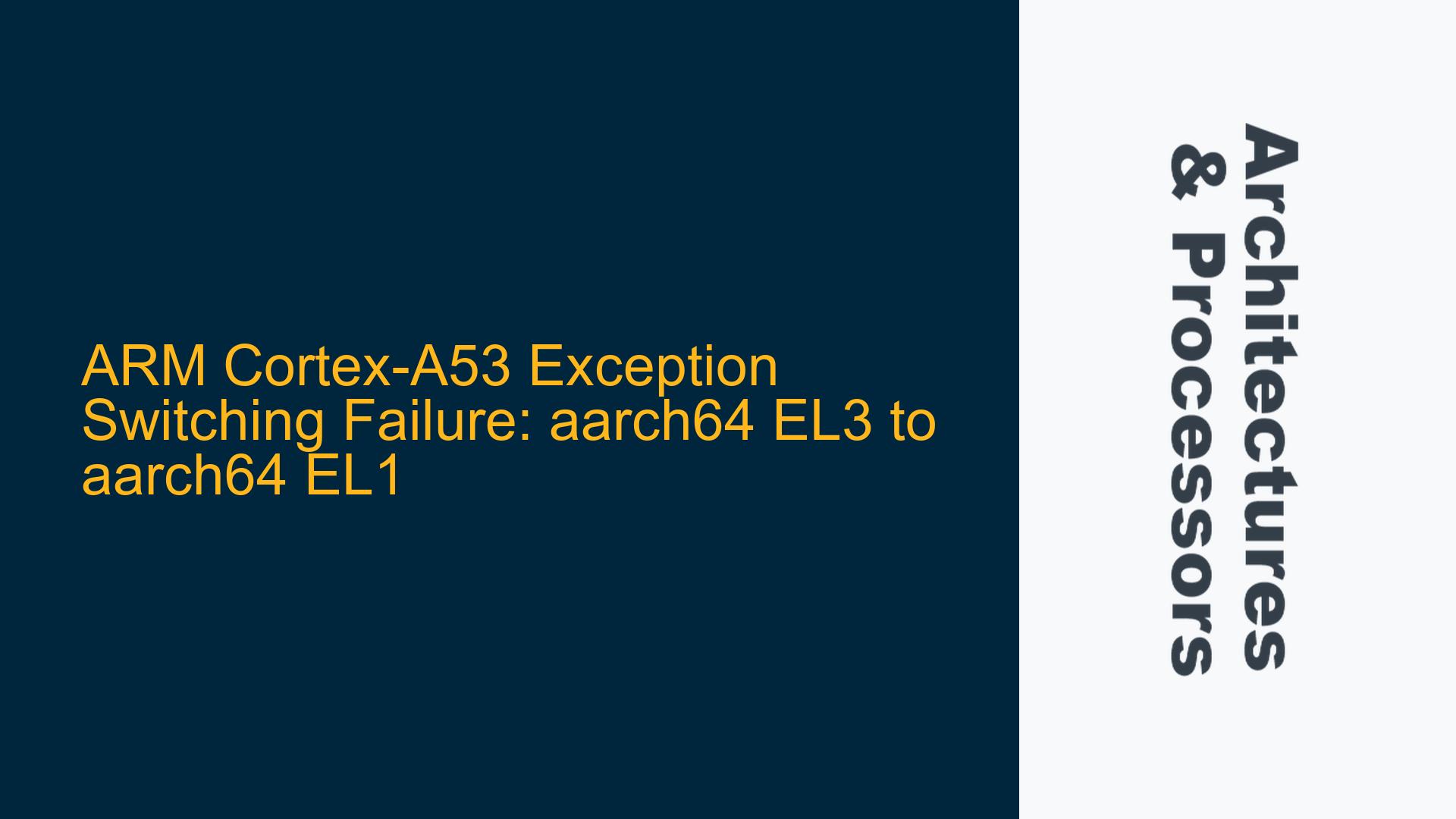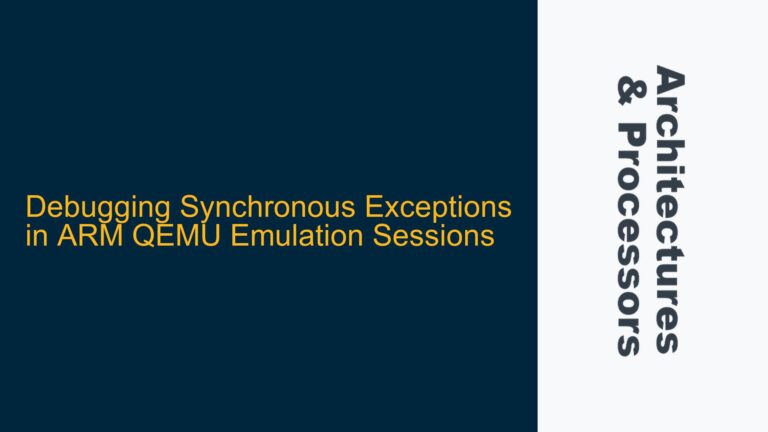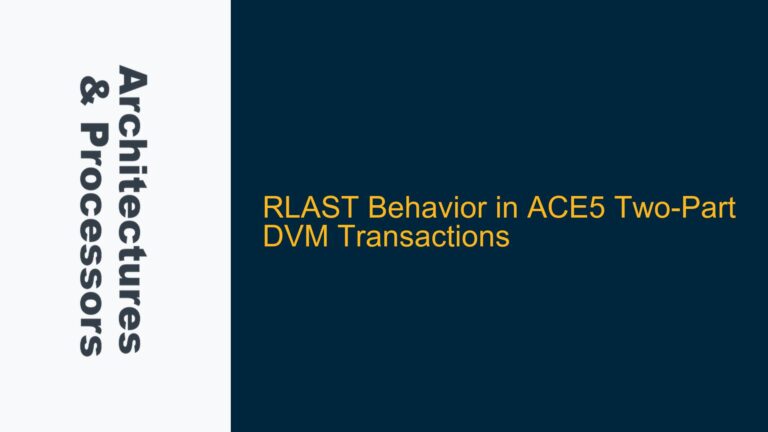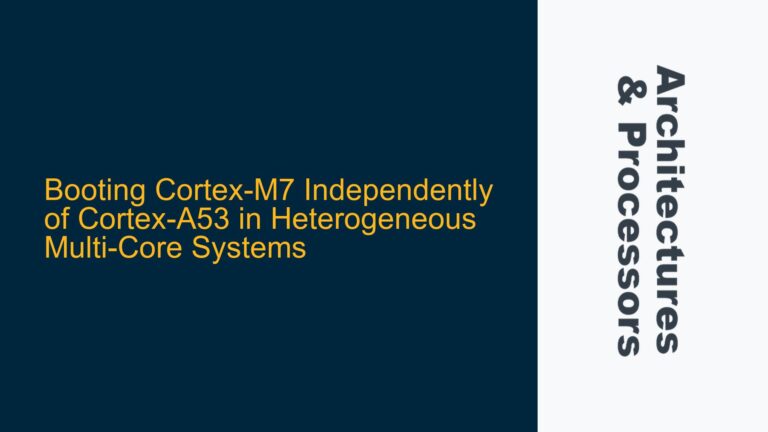ARM Cortex-A53 Exception Handling and Mode Switching Fundamentals
The ARM Cortex-A53 processor, part of the ARMv8-A architecture, supports multiple exception levels (ELs) and execution states (aarch32 and aarch64). Exception levels provide a hierarchical privilege model, with EL3 being the highest privilege level typically used for secure monitor code, EL2 for hypervisor functionality, and EL1 for operating systems. The execution state determines whether the processor operates in 32-bit (aarch32) or 64-bit (aarch64) mode. Switching between exception levels and execution states involves careful configuration of system registers, exception vectors, and security states.
When transitioning from EL3 to EL1, the processor must correctly handle the exception entry and exit sequences, ensuring that the target execution state (aarch32 or aarch64) is properly configured. The Exception Syndrome Register (ESR_ELx) and Fault Address Register (FAR_ELx) provide critical information about the nature of the exception, while the Vector Base Address Register (VBAR_ELx) defines the base address of the exception vector table for the target exception level.
In the case of switching from aarch64 EL3 to aarch64 EL1, the processor must ensure that the target EL1 execution state is correctly set, the exception vector table is properly configured, and any intermediate exception levels (such as EL2) do not interfere with the transition. Failure to correctly configure these elements can result in exception handling failures, preventing the processor from entering the desired execution state.
Misconfigured Exception Vector Tables and Security State Mismatch
One of the primary causes of exception switching failures between aarch64 EL3 and aarch64 EL1 is the misconfiguration of exception vector tables. Each exception level has its own vector table, defined by the VBAR_ELx register. If the VBAR_EL1 register is not correctly set to point to a valid exception vector table for aarch64 EL1, the processor will be unable to handle exceptions correctly when transitioning to EL1. This can result in undefined behavior or exception handling failures.
Another potential cause is a mismatch in the security state between the source and target exception levels. The ARMv8-A architecture supports two security states: Secure and Non-secure. If EL3 is operating in the Secure state and EL1 is configured for the Non-secure state (or vice versa), the transition may fail if the necessary security state switching mechanisms are not properly implemented. This includes configuring the Secure Configuration Register (SCR_EL3) to allow transitions between Secure and Non-secure states.
Additionally, the presence of an intermediate exception level, such as EL2, can complicate the transition. If EL2 is configured to handle virtualization and is not properly bypassed or configured to allow direct transitions from EL3 to EL1, the processor may fail to switch execution states correctly. This is particularly relevant if EL2 is configured to enforce certain security or virtualization policies that conflict with the intended transition.
Correctly Configuring Exception Handling and Security State Transitions
To resolve the issue of failing to switch from aarch64 EL3 to aarch64 EL1, several steps must be taken to ensure proper configuration of exception handling and security state transitions. First, verify that the VBAR_EL1 register is correctly set to point to a valid exception vector table for aarch64 EL1. This table must contain the appropriate exception handlers for synchronous and asynchronous exceptions, including IRQs, FIQs, and system calls.
Next, ensure that the security state is consistently configured between EL3 and EL1. If EL3 is operating in the Secure state, the SCR_EL3 register must be configured to allow transitions to the Non-secure state if EL1 is intended to operate in that state. This involves setting the appropriate bits in SCR_EL3, such as the NS (Non-secure) bit, to enable the transition. Additionally, the HCR_EL2 register must be checked if EL2 is present, ensuring that it does not block or interfere with the transition from EL3 to EL1.
The ESR_ELx and FAR_ELx registers should be examined to diagnose the specific cause of the exception handling failure. The ESR_ELx register provides detailed information about the type of exception that occurred, while the FAR_ELx register contains the faulting address. By analyzing these registers, it is possible to determine whether the failure is due to an invalid instruction, data abort, or other exception type.
Finally, implement proper exception entry and exit sequences when transitioning between exception levels. This includes saving and restoring the processor state, configuring the stack pointer, and ensuring that the execution state (aarch64) is correctly set before entering EL1. The use of synchronization barriers, such as ISB (Instruction Synchronization Barrier) and DSB (Data Synchronization Barrier), can help ensure that all configuration changes take effect before the transition is completed.
By following these steps, the issue of failing to switch from aarch64 EL3 to aarch64 EL1 can be resolved, ensuring that the processor correctly handles exceptions and transitions between exception levels. Proper configuration of exception vector tables, security states, and exception handling mechanisms is critical to achieving reliable operation in complex ARMv8-A systems.






